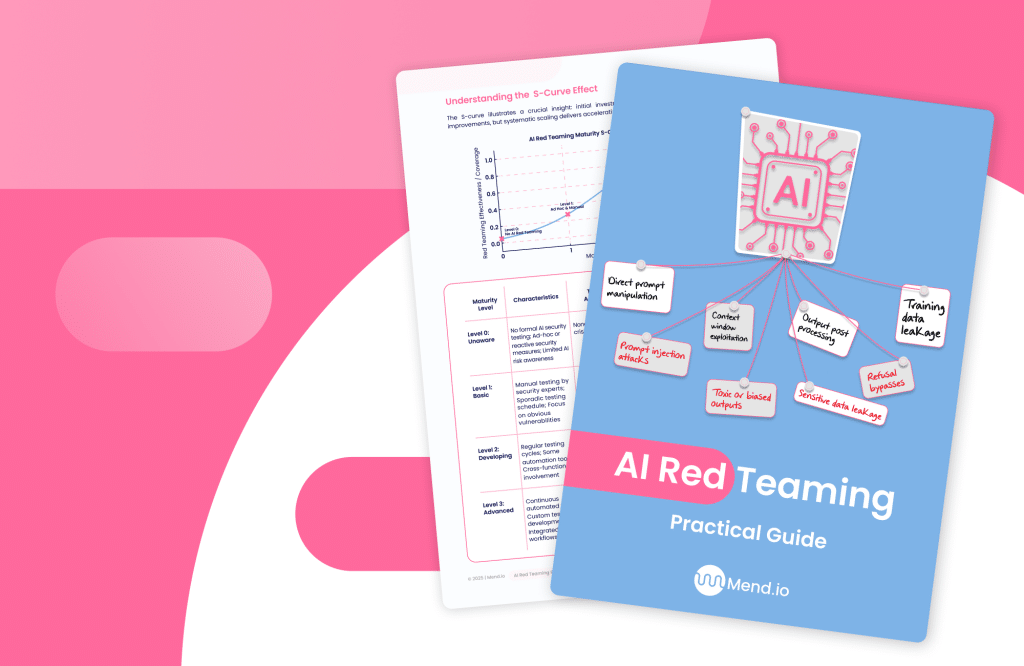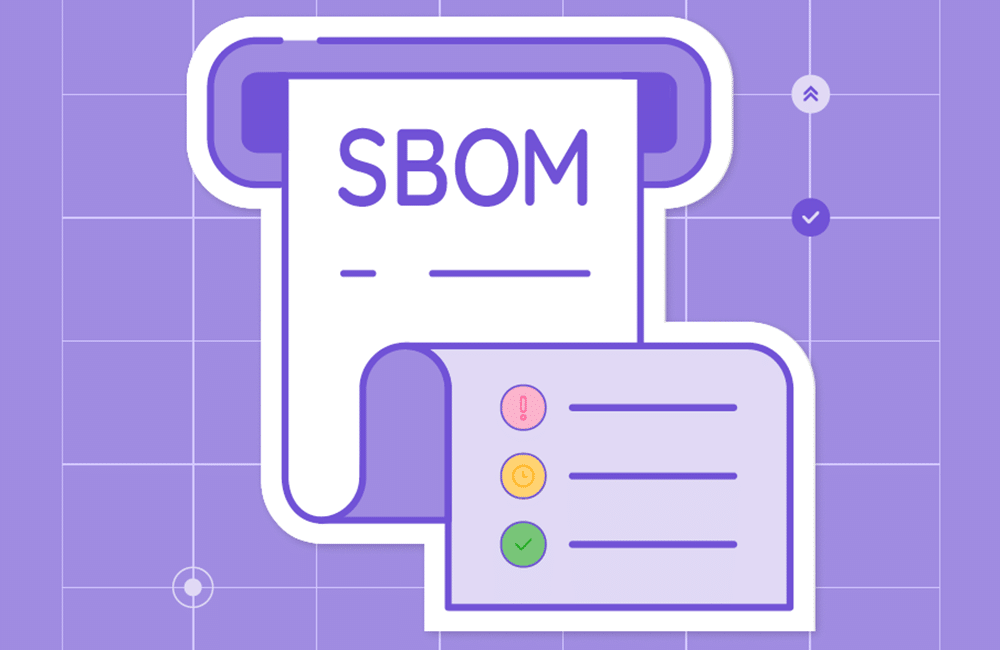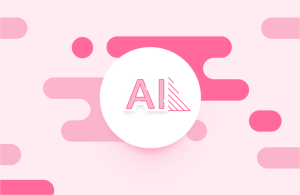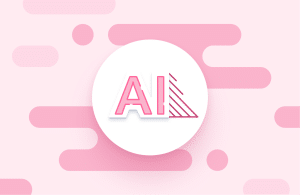Table of contents
What is an AI Bill of Materials (AI BOM)?

What’s happening under the hood of your AI systems? AI is now a crucial element of modern software applications, and if you don’t have visibility into its components, you’ll be left blind. Similar to a Software Bill of Materials (SBOM), an AI Bill of Materials, AI BOM, or AIBOM has become a crucial framework for documenting and securing this new and complex supply chain. Without such visibility, organizations risk falling prey to shadow AI examples—situations where untracked AI models or datasets operate outside approved oversight, creating compliance and security blind spots.
This article is part of a series of articles on Shadow AI.
AI BOM vs. SBOM
The goal of AI BOMs and SBOMs are the same — offering much needed visibility into digital supply chains. However, while an SBOM will typically focus on third-party libraries, versions, licenses and vulnerabilities in software components, an AI BOM takes this to the next level and extends the concept to the full lifecycle of an AI model. Think about artifacts like training datasets, model weights, and data augmentation techniques, and you’ll start to imagine what’s included.
Benefits of implementing an AI BOM
The first benefit organizations are likely to consider when implementing an AIBOM is the transparency they receive. Everything used to build and deploy AI systems, including their training datasets, algorithms, libraries and frameworks, and all dependencies and decisions being made are brought into the light, and are now cataloged and traceable. This adds a level of security to AI, helping to identify exposure and mitigate vulnerabilities, and meeting compliance needs for audits. An AIBOM can help to foster and engender trust in AI systems, especially for lagging adopters or those who have concerns within the organization. Of course, visibility is only half the equation — organizations must also know how to act on what they find. Strong AI governance frameworks turn that transparency into enforceable policy, ensuring that every model and dataset aligns with corporate and regulatory standards.
Behind the scenes, an AI BOM is also great for operational efficiencies. Teams can reuse documented components with ease, scale up the replication of AI systems, and collaborate more easily across departments with other AI stakeholders in different teams.
How does an AI BOM help with GenAI security?
An AIBOM also helps to reduce AI-specific concerns, which go beyond traditional application risks.
- Data leakage prevention: By detailing training data sources and access controls, an AI BOM helps ensure that sensitive or proprietary information is not inadvertently used or exposed during model development.
- Adversarial risk detection: AI BOMs provide traceability for model inputs and configurations, helping teams identify susceptibility to adversarial inputs or poisoning attacks.
- Model tampering visibility: Recording model provenance and update history can alert teams to unauthorized changes, ensuring integrity throughout the lifecycle.
- Guardrails against prompt injection: Documenting how prompts are processed and filtered can help enforce constraints around input handling in GenAI systems, reducing the risk of malicious prompt exploitation.
5 key components of an AI BOM
Sold on the benefits of an AIBOM but not sure where to start? Here’s what an AI Bill of Materials would usually include. Remember, it’s not merely a list of model files or dataset references. An AIBOM should cover the full context of how an AI model is developed, trained and deployed.
1. Model metadata
Include the model architecture (e.g., transformer, convolutional neural network), its training objectives, versioning information, and the parameters or weights used during training. Recording model provenance, (who created the model, when, and how) is also crucial for establishing trust and traceability. Bonus? For teams leveraging third-party or open-source models, metadata also serves to verify source authenticity and licensing.
2. Datasets
Training and validation datasets will include information about data sources, formats, labeling practices, and preprocessing steps. Documenting the datasets used to train a model not only supports reproducibility but also plays a central role in addressing data quality and potential bias. For example, recording whether a language model was trained primarily on English-language news articles can reveal geographic or cultural skew in its outputs. For high-risk or regulated use cases, dataset transparency is increasingly being required as part of compliance and audit standards.
3. Software and frameworks
Modern AI systems are built using a complex stack of machine learning libraries, frameworks, and dependencies, such as TensorFlow, PyTorch, scikit-learn, or Hugging Face Transformers. Much like a traditional SBOM, your AI BOM should list all relevant software packages, versions, and licenses. This helps security teams identify known vulnerabilities, apply patches, and ensure consistency across environments.
4. Hardware and compute environment
As the hardware and runtime environment used for training and inference can influence the performance and reliability of AI models, an AI BOM should capture key details about the compute infrastructure. Consider GPU types, memory configurations, and operating systems, which will support reproducibility and troubleshooting. This is especially important for models sensitive to hardware-level behavior or those deployed across diverse environments. For instance, a model optimized on high-memory GPUs may experience performance degradation or numerical instability when run on edge devices with limited compute.
5. Ethical and usage documentation
Finally, responsible AI practices require more than technical transparency. An AI BOM should also include documentation of model usage policies, intended applications, known limitations, and ethical considerations. This supports alignment with internal governance policies and external standards for responsible AI deployment. For generative AI, in particular, it can help clarify acceptable use, moderation strategies, and safeguards against misuse.
How to create an AI BOM
Building an effective AI BOM will be a structured, repeatable process that integrates with your existing DevSecOps workflows and supports continuous visibility across the AI lifecycle. Looking to implement AI BOMs at scale? Here’s your workflow:
- Define scope and objectives: Start by identifying which models, applications, or environments the AI BOM will cover, or which regulations you are aiming to meet. Clarify the goals for visibility, compliance, or security to ensure alignment with organizational risk management strategies.
- Discover assets: Map out all relevant AI assets across your environment. This includes trained models, datasets, training scripts, package managers, APIs, and third-party components and dependencies. Automated discovery tools can help identify hidden dependencies and surface unmanaged assets.
- Extract metadata: Collect detailed information from each asset, including model parameters, dataset sources, software versions, and compute configurations. This metadata forms the backbone of the AI BOM and enables effective tracking, risk analysis, and audits.
- Organize inventory: Structure the collected data into a standardized format that makes it easy to search, filter, and analyze. Align this structure with existing SBOM frameworks when possible to promote consistency and integration.
- Integrate with pipelines: Embed AI BOM generation into your ML development pipelines. This ensures that documentation is automatically updated with each model version.
- Apply governance: Define policies around what is required in an AI BOM and who is responsible for maintaining it. Governance should include access controls, review workflows, and version management. This will ensure others can trace the origins and evolution of your AI models.
- Validate and maintain: Continuously monitor for changes and ensure that AI BOMs remain accurate over time. Periodic validation helps detect drift, missing elements, or outdated components.
- Incorporate in SecOps: Make the AI BOM a functional part of your security operations and deployment pipelines. Use it to support vulnerability management, incident response, and compliance reporting, just as SBOMs are used in secure software supply chains. Once your inventory is established, proactive validation through AI red teaming tools can help test whether those components behave securely under real-world attack scenarios.
Tools and frameworks for generating AI BOMs
Several tools and frameworks can now support the creation and management of AIBOMs. Each offers a different type of support, automation, standardisation, and integration. Examples include:
Mend.io
Mend.io allows development teams to secure AI-powered apps with confidence, with a proactive approach to addressing AI-based risks, and tools built specifically for AI systems. You can use Mend.io to map every AI component in your pipeline, automatically detecting AI models, agents, RAGs and MCPs in your applications, building a live, continuously updated AI BOM. You can then enforce policies at scale, applying rules for model usage, licensing and prompt safety, including automated enforcement and approval workflows.
SPDX 3.0
SPDX 3.0, an open specification from the Linux Foundation, introducing structured support for AI and ML components. It defines a machine‑readable format that can include datasets, model metadata, pipelines, and runtime environment details. SPDX 3.0 extends the concept of SBOM to include AI artifacts, allowing organizations to manage AI BOMs with the same rigor and tooling used for traditional software. This supports consistent supply chain security policies across all application components.
OWASP AI BOM Initiative
The OWASP AI BOM project aims to formalize what an AI BOM should include and how it can be used to improve trust and security in AI systems. It offers community guidance on documenting essential AI artifacts and aligns with other standards such as SPDX. The initiative provides open‑source resources for organizations building or evaluating AI BOM processes, and is a great place to start when you’re building your own AI BOM.
Wiz
Wiz offers a dedicated AI Bill of Materials capability as part of its AI Security Posture Management (AI‑SPM) platform. It automatically discovers AI assets such as hosted or managed models, datasets, APIs, frameworks and hardware across cloud environments. It maps them into a security inventory, monitors for misconfigurations or drift, and surfaces risks via its security graph. However, it has limited visibility into developer pipelines, and does not put a focus on the software supply chain as a whole.
Snyk
Snyk is in the early stages of offering AI BOM generation, with its CLI prototype that scans codebases for references to AI models and datasets, producing a basic bill of materials as part of its AI Trust Platform. This is not yet integrated with software component inventories, and governance frameworks and capabilities are in early development.
As AI adoption accelerates, enterprises need to have transparency, governance and security in mind.









